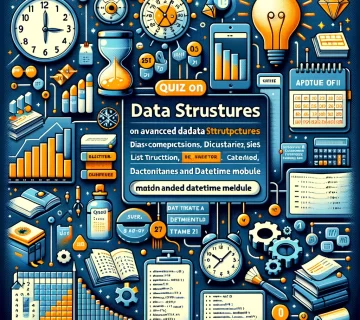Dive deep into the intricacies of Python’s advanced programming concepts with our comprehensive quiz designed to challenge and refine your understanding. This quiz not only tests your knowledge on the Collections module, with its powerful data structures like namedtuple, defaultdict, and Counter, but also explores the elegant world of decorators and context managers, key for enhancing code readability and managing resources efficiently. Additionally, we delve into the practical implementation of priority queues, leveraging the queue and heapq modules to handle data with nuanced prioritization. Each question has been carefully crafted from our detailed discussions on these topics, aiming to assess and solidify your grasp of these advanced Python features.
By participating in this quiz, you’re not just recalling information but also applying it to scenarios that mimic real-world applications. Whether you’re a seasoned developer looking to brush up on your Python skills or an aspiring programmer eager to dive into advanced concepts, this quiz offers a valuable opportunity to evaluate your proficiency. It’s a chance to identify strengths, uncover areas for improvement, and further your journey toward mastering Python’s more sophisticated capabilities. Engage with these challenging questions and take a step closer to becoming an expert in Python’s advanced programming landscape.
This quiz is just one step in your ongoing journey of Python proficiency. If certain topics sparked your interest or if you felt unsure about specific concepts, we encourage you to dive deeper. The world of Python is vast and constantly evolving, offering endless opportunities for learning and growth. Share your score in the comments, along with any topics you found particularly intriguing or challenging. Your feedback not only helps us tailor future content to better suit your learning needs but also fosters a community of shared knowledge and continuous improvement.





No comment